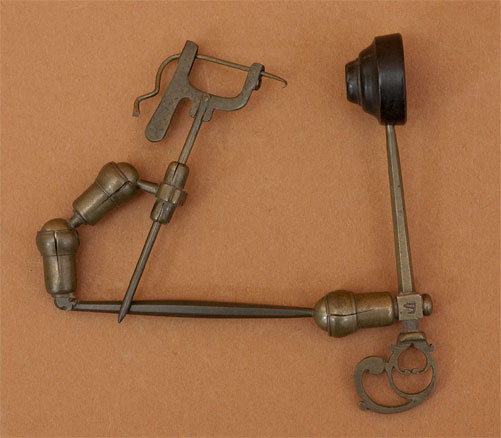 |
|||||
 |
 |
||||
 |
|||||
 |
 |
||||

This microscope has three objectives, each consisting of a biconvex lens mounted in a turned hardwood holder. Six objectives were supplied with Musschenbroek's microscope, however, only three remain with this instrument. The objective assembly can be mounted on the end of a tapered brass rod, which is connected via a series of articulated joints to one of a number of specimen holders. These ball and socket joints became quite famous and were known as "Musschenbroek nuts". Imaging is good with magnification near 15x. Accessories included with the instrument are two U-shaped specimen holders, a long spiral rod, a short rod with two ball ends, a small hook, and a brass forceps. The user would mount the specimen to one of these devices, then bend the joints until the specimen came into focus. The magnifier, objectives and sample holders can be transported in an oval case covered in black leather. The microscope as well as the case are stamped with Musschenbroek's symbols: an oriental lamp and a pair of crossed keys. The microscope is approximately 9x5cm.
The Billings Collection in the US and the Boerhaave Museum in Leiden have instruments identical to this.
Featured 02/2011; 06/2018